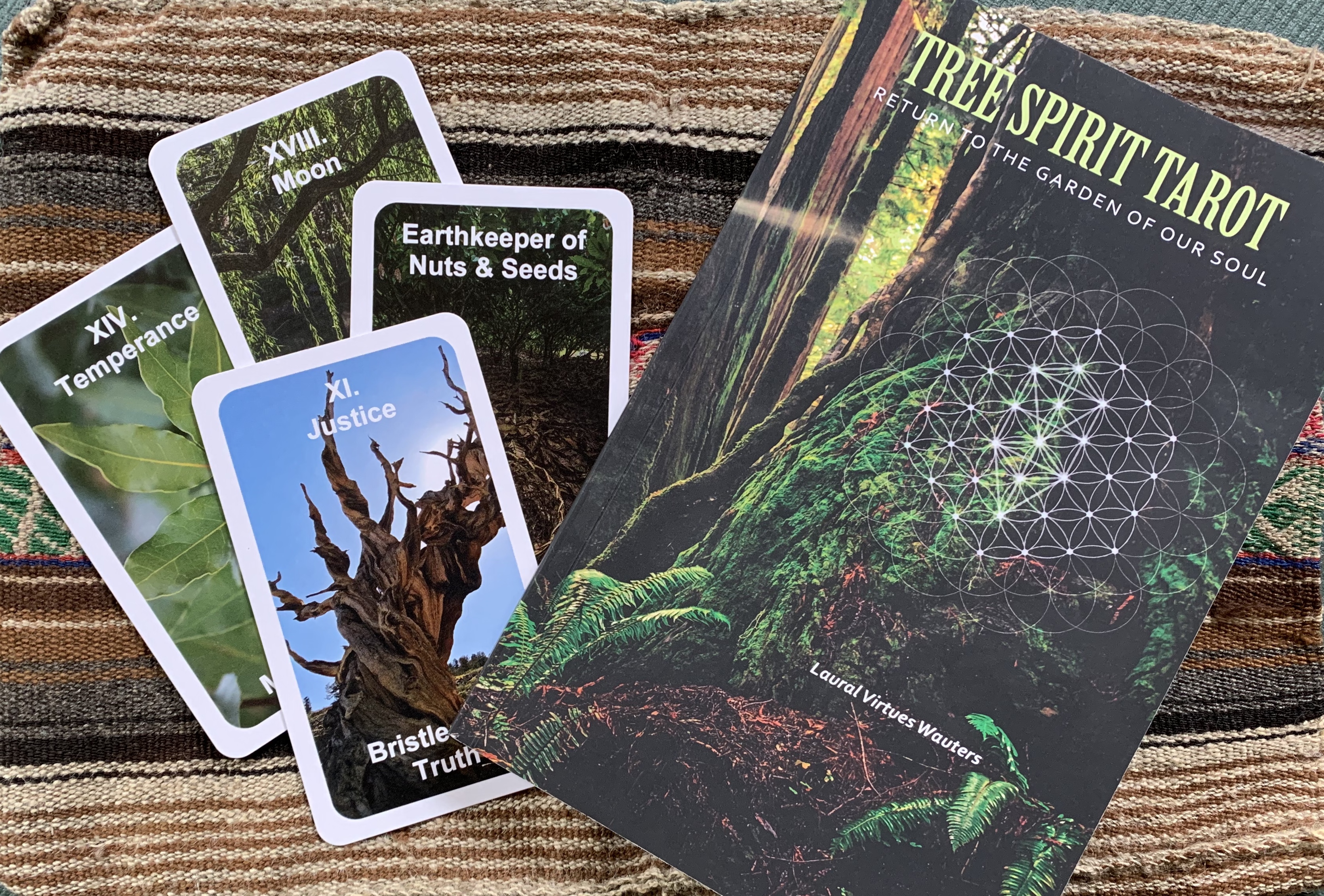Banyan – Reflection
Genus: Ficus – Family: Moraceae
The banyan tree, Ficus benghalensis, represents a time of becoming self-aware through reflection, meditation, silence and a quieting of one’s mind.
The banyan tree is an Indian fig tree whose branches produce aerial roots that can mature and cover several acres. Banyans are the biggest trees in the world in terms of total coverage area. The largest banyan is in the Indian state of Andhra Pradesh; it covers 4.7 acres and can shelter 20,000 people. Banyan trees naturally create sacred spaces with their massive roots that seem to come from the sky. They can form a multi-columned temple from a single trunk.
Greek historians wrote of Alexander the Great and his army of 7,000 people taking shelter under a single Banyan tree in 326 BCE.
The banyan is the national tree of India. Banyan trees are large evergreen fig trees that can shield and protect us from the outside world. Once inside their sacred embrace, we sense the presence of this wise spirit that honors our need for privacy and introspection. The banyan encourages us to go within ourselves as we reflect on our life and who we are becoming. Our reflection should mirror the integrity we seek in our search for deeper self-awareness.
Hindu texts describe the banyan as the world tree that grows upside-down to bring blessings to humanity. Yogis spoke to large crowds of people under the shade of a banyan tree. The banyan also provided back support and shelter during periods of prolonged meditation. It is said that Krishna (Hindu god of compassion, tenderness and love) read the Bhagavad Gita under a banyan tree.
In 1667 and 1674, English poet John Milton immortalized the banyan tree in his epic poem “Paradise Lost.”
For more in-depth insights on Banyan trees visit my blog-post: Banyan – Reflection
The banyan tree is just one of 850 different species of fig, each with its own unique fig wasps that pollinate it. Unfortunately, the fruit of Ficus benghalensis is barely edible, unlike the common fig. But its mere presence provides nourishment for the soul. The banyan tree is sometimes confused with the Bodhi tree or peepal, ficus religiosa. The Bodhi tree or sacred fig is associated with Buddhism, which began around 500 BCE when Buddha experienced enlightenment sitting silently under a Bodhi tree. The branches of a Bodhi Tree reach up and out, versus down and around like the banyan.
Message: The banyan spirit reminds us to slow down and meditate on where we are now and where we want to go. This is a time to retreat into our self as we reflect on the knowledge we have gained and the path we have chosen. Banyan asks that we embrace this period of isolation as a gift of initiation to ourselves in search of our inner truth, often hidden deep within our subconscious mind. The answers we seek are within us, if we listen to our soul.
Challenge: Feeling isolated, alone, bitter, reclusive or odd. Work with the gentle spirit of the banyan tree to help find our way home.
If you liked what you read and want more... you may be interested in having the actual guidebook and card deck. The 204 page full-color book is sold separately from the cards. My goal is to find a publisher who can offer this as a set. In the meantime, you can purchase either the book or cards via these links. Thank you for you support. Laural
Tree Spirit Tarot – Return to the Garden of our Soul
Tree Spirit Tarot book available at: Amazon
Tree Spirit Tarot deck available at: Printers Studio

For more information visit: lauralwauters.com


